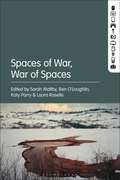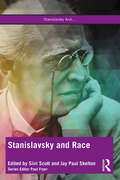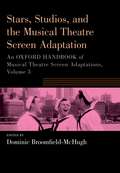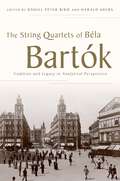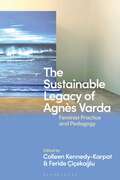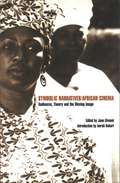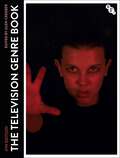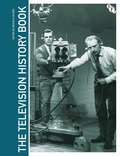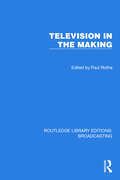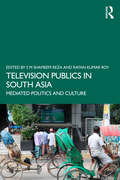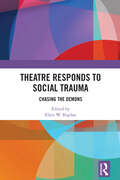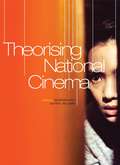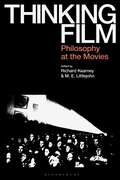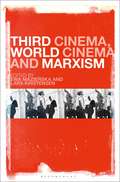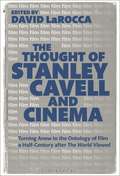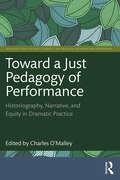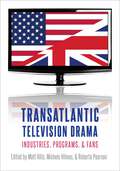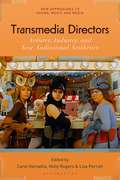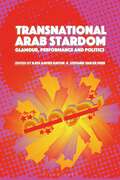- Table View
- List View
Spaces of War, War of Spaces
Spaces of War, War of Spaces provides a rich, international and multi-disciplinary engagement with the convergence of war and media through the conceptual lens of 'space'. 'Space' offers a profound, challenging and original framework through which notions of communication, embodiment, enactment, memory and power are interrogated not only in terms of how media spaces (traditional, digital, cultural, aesthetic, embodied, mnemonic) transform the conduct, outcomes and consequences of war for all involved, but how 'war' actors (political, military, survivors, victims) recreate space in a manner that is transformative across political, social, cultural and personal spheres. Foregrounding the work of artists, activists and practitioners alongside more traditional scholarly approaches Spaces of War, War of Spaces engages with the 'messiness' of war and media through the convergence of practice and theory, where showing and embodying is made explicit.
Stanislavsky and Race: Questioning the “System” in the 21st Century (Stanislavsky And...)
Stanislavsky and Race is the first book to explore the role that Konstantin Stanislavsky’s “system” and its legacies can play in building, troubling and illuminating today’s anti-racist theatre practices. This collection of essays from leading figures in the field of actor training stands not only as a resource for a new area of academic enquiry, but also for students, actors, directors, teachers and academics who are engaged in making inclusive contemporary theatre. In seeking to dismantle the dogma that surrounds much actor training and replace it with a culturally competent approach that will benefit our entire community, the “system” is approached from a range of perspectives featuring the research, reflections and provocations of 20 different international artists interrogating Stanislavsky’s approach through the lens of race, place and identity. Stanislavsky and … is a series of multi-perspectival collections that bring the enduring legacy of Stanislavskian actor training into the spotlight of contemporary performance culture, making them ideal for students, teachers and scholars of acting, actor training and directing.
Stars, Studios, and the Musical Theatre Screen Adaptation: An Oxford Handbook of Musical Theatre Screen Adaptations, Volume 3 (OXFORD HANDBOOKS SERIES)
Hollywood's conversion to sound in the 1920s created an early peak in the film musical, following the immense success of The Jazz Singer. The opportunity to synchronize moving pictures with a soundtrack suited the musical in particular, since the heightened experience of song and dance drew attention to the novelty of the technological development. Until the near-collapse of the genre in the 1960s, the film musical enjoyed around thirty years of development, as landmarks such as The Wizard of Oz, Meet Me in St. Louis, Singin' in the Rain, and Gigi showed the exciting possibilities of putting musicals on the silver screen. The final of three volumes, Stars, Studios, and the Musical Theatre Screen Adaptation: An Oxford Handbook traces how stardom and technology has affected the evolution of the genre of the stage-to-screen musical. Many chapters examine specific screen adaptations in depth, with case studies on the screen versions of Broadway favorites Carousel and Brigadoon, while others deal with broad issues such as how music rights affected how studios approached screen adaptations. Together, the chapters incite lively debates about the process of adapting Broadway for the big screen and provide models for future studies. Volume I: The Politics of the Musical Theatre Screen Adaptation Volume II: Race, Sexuality, and Gender and the Musical Screen Adaptation Volume III: Stars, Studios, and the Musical Theatre Screen Adaptation
The String Quartets of Béla Bartók: Tradition and Legacy in Analytical Perspective
Béla Bartók (1881-1945) was one of the most important composers and musical thinkers of the 20th century. His contributions as a composer, as a performer and as the father of ethnomusicology changed the course of music history and of our contemporary perception of music itself. At the center of Bartók's oeuvre are his string quartets, which are generally acknowledged as some of the most significant pieces of 20th century chamber music. The String Quartets of Béla Bartók brings together innovative new scholarship from 14 internationally recognized music theorists, musicologists, performers, and composers to focus on these remarkable works from a range of theoretical and methodological perspectives. Focusing on a variety of aspects of the string quartets-harmony and tonality, form, rhythm and meter, performance and listening-it considers both the imprint of folk and classical traditions on Bartók's string quartets, and the ways in which they influenced works of the next generation of Hungarian composers. Rich with notated music examples the volume is complemented by an Oxford Web Music companion website offering additional notated as well as recorded examples. The String Quartets of Béla Bartók, reflecting the impact of the composer himself, is an essential resource for scholars and students across a variety of fields from music theory and musicology, to performance practice and ethnomusicology.
The Sustainable Legacy of Agnès Varda: Feminist Practice and Pedagogy
Drawing especially on the encounters and relationships that defined her exceptional career, The Sustainable Legacy of Agnès Varda outlines a sustainable legacy for the celebrated director and visual artist. Over nine chapters, it unpacks how creation, connection, and environment form the core of Varda's artistry, which centers foremost on relationships with her family, with other artists, even with passersby she would meet in her travels around the world. Also celebrating her feminist legacy, the chapters cover a wide range, from the classic Cléo from 5 to 7 (1962) to documentaries The Beaches of Agnès (2008) and Faces Places (2017) as well as selected art installations. The book's final section is dedicated to teaching Varda's work; here, ten scholars from around the world consider how Varda's art and feminist pedagogies offer unique ways to bring crucial concepts into the classroom. By seeking a sustainable praxis to discuss and teach Varda's work, and by making pedagogical concerns an explicit part of this approach, this book argues that Varda's insights about the nature of creative work will inspire new generations of viewers and audiences.
Symbolic Narratives/African Cinema: Audiences, Theory and the Moving Image
In the conference Africa and the History of Cinematic Ideas held in London in 1995, film-makers, cultural theorists and critics gathered to debate a range of issues. Views were exchanged on such topics as imperialism, and the problems of distribution.
The Television Genre Book
In this new edition of The Television Genre Book, leading international scholars have come together to offer an accessible and comprehensive update to the debates, issues and concerns of the field. As television continues to evolve rapidly, this new edition reflects the ways in which TV has transformed in recent years, particularly with the emergence of online streaming services such as Netflix, Disney+, HBO Max and Amazon Prime. It also includes a new chapter on sports TV, and expanded coverage of horror, political thrillers, Nordic noir, historical documentary and docu-drama. With analyses of popular shows like Stranger Things, Killing Eve, The Crown, Chernobyl, Black Mirror, Fleabag, Breaking Bad and RuPaul's Drag Race, this book offers a comprehensive understanding of television genre for scholars and students alike.
The Television History Book
Traces the history of broadcasting and the infludence developments in broadcasting have had over our social, cultural and economic practices. Examining the broadcasting traditions of the UK and USA, 'The Television History Book' make connections between events and tendencies that both unite and differentiate these national broadcasting traditions.
Television in the Making (Routledge Library Editions: Broadcasting #37)
Television in the Making (1956) looks at television in its infancy, with essays by the leaders of the medium at the time, people who were forging new paths as they imagined and actioned the possibilities of television.
Television Publics in South Asia: Mediated Politics and Culture
Television has a prime role to play in the formation of discursive domains in the everyday life of South Asian publics. This book explores various television media practices, social processes, mediated political experiences and everyday cultural compositions from Afghanistan, Bangladesh, India, Nepal, Pakistan and Sri Lanka. With the help of country specific case studies, it captures broad range of themes which foreground the publics and their real-life experiences of television in the region. The essays in this book discuss gendered television spaces; women seeking solace from television in pandemic; the taboo in digital tv dramas; television viewership and localizing publics; changing viewership from television to OTT; news and public perception of death; re-defining ‘the national’; theatrical television; and post truth television news, among other key issues. Rich in ethnographic case studies, this volume will be a useful resource for scholars and researchers of media and communication studies, journalism, digital media, South Asian studies, cultural studies, sociology and social anthropology.
Theatre Responds to Social Trauma: Chasing the Demons (Routledge Series in Equity, Diversity, and Inclusion in Theatre and Performance)
This book is a collection of chapters by playwrights, directors, devisers, scholars, and educators whose praxis involves representing, theorizing, and performing social trauma.Chapters explore how psychic catastrophes and ruptures are often embedded in social systems of oppression and forged in zones of conflict within and across national borders. Through multiple lenses and diverse approaches, the authors examine the connections between collective trauma, social identity, and personal struggle. We look at the generational transmission of trauma, socially induced pathologies, and societal re-inscriptions of trauma, from mass incarceration to war-induced psychoses, from gendered violence through racist practices. Collective trauma may shape, protect, and preserve group identity, promoting a sense of cohesion and meaning, even as it shakes individuals through pain. Engaging with communities under significant stress through artistic practice offers a path towards reconstructing the meaning(s) of social trauma, making sense of the past, understanding the present, and re-visioning the future.The chapters combine theoretical and practical work, exploring the conceptual foundations and the artists’ processes as they interrogate the intersections of personal grief and communal mourning, through drama, poetry, and embodied performance.
Theorising National Cinema
Why do we think of clusters of films as 'national cinema'? Why has the relationship between the nation and film become so widely and uncritically accepted? 'Theorising National Cinema' is a major contribution to work on national cinema, by many of the leading scholars in the field. It addresses the knotty and complex relationship between cinema and national identity, showing that the nationality of a cinema production company, and the films that its made, have not always been seen as pertinent. The volume begins by reviewing and rethinking the concept of national cinema in an age of globalisation, and it goes on to chart the parallel developments of national film industries and the idea of a nation state in countries as diverse as Japan, South Korea, Russia, France and Italy. The issues of a 'national cinema' for nation states of contested status, with disputed borders or displaced peoples, is discussed in relation to film-making in Taiwan, Ireland and Palestine. The contributors also consider the future of national cinema in an age of trans-national cultural flows, exploring issues of national identity and cinema in Latin America, Asia, the Middle-East, India, Africa and Europe. 'Theorising National Cinema' also includes a valuable bibliography of works on national cinema.
Thinking Film: Philosophy at the Movies
Hailed as one of America's original art forms, film has the distinctive character of crossing high and low art. But film has done more than this. According to American philosopher Stanley Cavell, film was also a place where America in the 1930s and 1940s did its thinking, a tradition that was taken up and enriched throughout world cinema. Can film indeed think? That is, can film do the work of philosophy?Following Cavell's lead to think along the tear of the analytic-continental traditions, this book draws from both sides of the philosophical divide to reflect on this question. Spanning generations and disciplines, pondering everything from art house classics to mainstream blockbusters, Thinking Film: Philosophy at the Movies aims to fling open the doors to this conversation on all sides. Inquiring into both philosophy's word on film and film's word to philosophy, the interdisciplinary dialogue of this book traverses the conceptual and the particular as it considers how film catalyzes our thinking and sets us talking. After viewing the world through film, we find our world--and ourselves--transformed by deeper understanding and new possibilities.This book aims to provide a novel and engaging way in to thinking with and about this enduringly popular art form.
Third Cinema, World Cinema and Marxism
Third Cinema, World Cinema and Marxism offers an analysis of Third Cinema and World Cinema from the perspective of Marxism. Its starting point is an observation that of all cinematic phenomena none is as intimately related to Marxism as Third Cinema, which decries neoliberalism, the capitalist system, and the Hollywood model of cinema as mere entertainment to make money. This is largely to do with the fact that both Marxism and Third Cinema are preoccupied with inequalities resulting from capital accumulation, of which colonialism is the most extreme manifestation. Third Cinema also defines cinematic modes in terms of representing interest of different classes, with First Cinema expressing imperialist, capitalist, bourgeois ideas, Second Cinema the aspirations of the middle stratum, the petit bourgeoisie and Third Cinema is a democratic, popular cinema.
The Thought of Stanley Cavell and Cinema: Turning Anew to the Ontology of Film a Half-Century after The World Viewed
Stanley Cavell was, by many accounts, America's greatest philosophical thinker of film. Like Bazin in France and Perkins in England, Cavell did not just transform the American capacity to take film as a subject for philosophical criticism; he had to first invent that legitimacy. Part of that effort involved the creation of several key now-canonical texts in film studies, among them the seminal The World Viewed along with Pursuits of Happiness and Contesting Tears. The present collection offers, for the first time anywhere, a concerted effort mounted by some of today's most compelling writers on film to take careful account of Cavell's legacy. The contributors think anew about what precisely Cavell contributed, what holds up, what is in need to revision or updating, and how his writing continues to be of vital significance and relevance for any contemporary approach to the philosophy of film.
Tightrope walker (Large Print)
This is an image of a tightrope walker standing on a rope strung between two towers and holding a long pole, which helps him balance. He is facing to the front so all his limbs are visible. There is a locator dot shown, which will be at the top left of the page when the image is the right way up. In the top centre of the page is the small image (about 5 cm high), of the tightrope walker. He is standing with his arms stretched out, holding his long pole extending to the left and right. His legs are straight and he has his feet on the wire rope, which is stretched between the towers on the left and right of the page. On the left and right of the page are two towers with a safety net, seen from the side, stretched between them. At the bottom of the page is the ground.
Tightrope walker (UEB Contracted)
This is an image of a tightrope walker standing on a rope strung between two towers and holding a long pole, which helps him balance. He is facing to the front so all his limbs are visible. There is a locator dot shown, which will be at the top left of the page when the image is the right way up. In the top centre of the page is the small image (about 5 cm high), of the tightrope walker. He is standing with his arms stretched out, holding his long pole extending to the left and right. His legs are straight and he has his feet on the wire rope, which is stretched between the towers on the left and right of the page. On the left and right of the page are two towers with a safety net, seen from the side, stretched between them. At the bottom of the page is the ground.
Tightrope walker (UEB uncontracted)
This is an image of a tightrope walker standing on a rope strung between two towers and holding a long pole, which helps him balance. He is facing to the front so all his limbs are visible. There is a locator dot shown, which will be at the top left of the page when the image is the right way up. In the top centre of the page is the small image (about 5 cm high), of the tightrope walker. He is standing with his arms stretched out, holding his long pole extending to the left and right. His legs are straight and he has his feet on the wire rope, which is stretched between the towers on the left and right of the page. On the left and right of the page are two towers with a safety net, seen from the side, stretched between them. At the bottom of the page is the ground.
Toward A Just Pedagogy Of Performance: Historiography, Narrative, And Equity In Dramatic Practice (Routledge Series in Equity, Diversity, and Inclusion in Theatre and Performance)
This book is a compendium of resources largely by and for artists and scholars interested in engaging in conversations of justice, diversity, and historiography in the fields of theatre and performance studies. For these students, and for the future instructors in our field who will use this book, we hold a tripartite hope: to expand, to enable, and to provide access. In its whole, we intend for this book to provoke its readers to question the narratives of history that they’ve received (and that they may promulgate) in their artistic and scholarly work. We aim to question methods and ethics of reading present in the western mode of studying drama and performance history. The contributions in the book—not traditional chapters, but manifestos, experiences, articles, conversations, and provocations—raise questions and illuminate gaps, and they do not speak in a unified voice or from a static position. These pieces are written by artists, graduate students, teachers, administrators, and undergraduates; these are expressions of hope and of experience, and not of dogma. This book is aimed toward instructors of undergraduates, both graduate students and faculty at all levels of seniority within theatre and performance studies, as well as at artists and practitioners of the art that wish to find more just ways of viewing history.
Transatlantic Television Drama: Industries, Programs, and Fans
In 2014, the UK science-fiction television series Black Mirror was released on Netflix worldwide, quickly becoming a hit with US audiences. Like other beloved British imports, this series piqued Americans' interest with hints of dark comedy, clever plotlines, and six-episode seasons that left audiences frantic for more. In Transatlantic Television Drama, volume editors Michele Hilmes, Matt Hills, and Roberta Pearson team up with leading scholars in TV studies and transnational television to look at how serial dramas like Black Mirror captivate US audiences, and what this reveals about the ways Americans and Brits relate to each other on and off the screen. Focusing on production strategies, performance styles, and audience reception, chapters delve into some of the most widely-discussed programs on the transatlantic circuit, from ongoing series like Game of Thrones, Downton Abbey, Orphan Black, and Sherlock, to those with long histories of transnational circulation like Masterpiece and Doctor Who, to others whose transnational success speaks to the process of exchange, adaptation, and cooperation such as Rome, Parade's End, Broadchurch, and Gracepoint. The book's first section investigates the platforms that support British/American exchange, from distribution partnerships and satellite providers to streaming services. The second section concentrates on the shift in meaning across cultural contexts, such as invocations of heritage, genre shifts in adaptation, performance styles, and, in the case of Episodes, actual dramatized depiction of the process of transatlantic television production. In section three, attention turns to contexts of audience reception, ranging from fan conventions and fiction to television criticism, the effects of national branding on audiences, and the role of social media in de- or re-contextualizing fans' response to transnational programs.
Transdisziplinäre Begegnungen zwischen postdigitaler Kunst und Kultureller Bildung: Perspektiven aus Wissenschaft, Kunst und Vermittlung
Postdigitale Kunstpraktiken bergen große Potenziale für die Kulturelle Bildung, da sie kreative Aneignungsformen im Kontext digitaler Technologien hervorbringen, neue Rezeptionserfahrungen kreieren und eine kritisch informierte Betrachtung von Digitalisierungsprozessen befördern. Dennoch sind sie bislang wenig erforscht und nehmen nur vereinzelt Eingang in Bildung und Vermittlung. Der Sammelband kombiniert theoretische Betrachtungen postdigitaler Kunst mit Projektberichten aus der Praxis, um Leser*innen die Möglichkeit zu geben, das Feld besser zu verstehen und Anwendungsideen für die eigenen Tätigkeitsbereiche zu entwickeln.
Transmedia Directors: Artistry, Industry and New Audiovisual Aesthetics (New Approaches to Sound, Music, and Media)
Transmedia Directors focuses on artist-practitioners who work across media, platforms and disciplines, including film, television, music video, commercials and the internet. Working in the age of media convergence, today's em/impresarios project a distinctive style that points toward a new contemporary aesthetics. The media they engage with enrich their practices – through film and television (with its potential for world-building and sense of the past and future), music video (with its audiovisual aesthetics and rhythm), commercials (with their ability to project a message quickly) and the internet (with its refreshed concepts of audience and participation), to larger forms like restaurants and amusement parks (with their materiality alongside today's digital aesthetics). These directors encourage us to reassess concepts of authorship, assemblage, transmedia, audiovisual aesthetics and world-building. Providing a vital resource for scholars and practitioners, this collection weaves together insights about artist-practitioners' collaborative processes as well as strategies for composition, representation, subversion and resistance.
Transnational Arab Stardom: Glamour, Performance and Politics
Building on the work of star studies scholars, this collection provides contextual analyses of off-screen representation, as well as close textual analyses of films and star personas, thereby offering an in-depth study of the Arab star as text and context of Arab cinema. Using the tools of audience reception studies, the collection will also look at how stars (of film, stage, screen and new media) are viewed and received in different cultural contexts, both within and outside of the Arabic-speaking world.Arab cinema is often discussed in terms of political representation and independent art film, but rarely in terms of stardom, glamour, performance or masquerade. Aside from a few individual studies on female stardom or aspects of Arab masculinity, no major English-language study on Arab stardom exists, and collections on transnational stars or world cinema also often neglect to include Arab performers. This new book seeks to address this gap by providing the first study dedicated entirely to stardom on the Arab screen.Structured chronologically and thematically, this collection highlights and explores Arab film, screen and music stars through a transnational and interdisciplinary set of contributions that draw on feminist, performance and film theories, media studies, sound studies, material culture, queer star and celebrity studies, and social media studies.
Trapeze act (Large Print)
This page shows two trapeze artists performing their act. They are seen from the side so each of them has only one arm and leg visible. Also on the page, there are two supporting towers, two trapezes and a safety net. The scene has a dashed line image border. There is a locator dot shown, which will be at the top left of the page when the image is the right way up. At the top of the page the ropes of the two trapezes can be found hanging. They are attached to points above, which cannot be found as they are outside the image border. In the centre of the page are the two small images of the performers. The one to the left hangs upside down with his legs hooked over the trapeze with his head to the right and his arm down the page. The performer to the right is flying horizontally through the air with his arm to the left, his hand ready to grasp the hand of the other artist. To the right of his arm are his head, chest and leg. His lower leg and foot point up the page. On the left and right of the page are two towers with a safety net, seen from the side, stretched between them. At the bottom of the page is the ground.
Trapeze act (UEB Contracted)
This page shows two trapeze artists performing their act. They are seen from the side so each of them has only one arm and leg visible. Also on the page, there are two supporting towers, two trapezes and a safety net. The scene has a dashed line image border. There is a locator dot shown, which will be at the top left of the page when the image is the right way up. At the top of the page the ropes of the two trapezes can be found hanging. They are attached to points above, which cannot be found as they are outside the image border. In the centre of the page are the two small images of the performers. The one to the left hangs upside down with his legs hooked over the trapeze with his head to the right and his arm down the page. The performer to the right is flying horizontally through the air with his arm to the left, his hand ready to grasp the hand of the other artist. To the right of his arm are his head, chest and leg. His lower leg and foot point up the page. On the left and right of the page are two towers with a safety net, seen from the side, stretched between them. At the bottom of the page is the ground.
